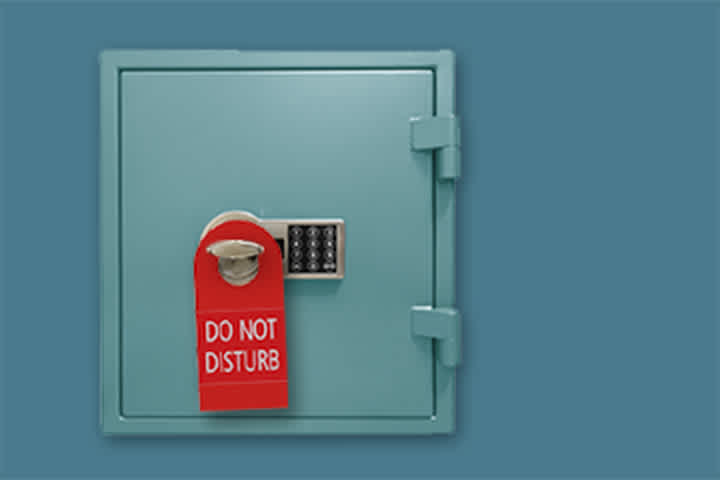Everything you need to know about the post-intervention file
Keytrade Bank
keytradebank.be
September 19, 2023
3 minutes to read
1. What is a post-intervention file?
A post-intervention file (PID) is a document that is crucial when selling a property in Belgium. Its purpose is twofold. For one thing, the file provides a detailed overview of a building's structure and all the technical specifications and works that have been carried out. For another, it serves as a safety guide of sorts for future owners, meaning they know exactly where pipes, cables and other critical infrastructure are located.
2. Why is a post-intervention file important?
A post-intervention file is more than just an administrative obligation; it is a preventive measure that can minimise risks such as damage, accidents and liabilities. In a world where technology and construction methods are constantly evolving, even showing a little ignorance can have serious consequences. Consider, for example, the risks of puncturing a concealed gas pipe or demolishing a retaining wall, which may result not only in material damage but a life-threatening situation. A post-intervention file can help you to mitigate such risks by making all the relevant information transparent. A post-intervention file is more than a blueprint of a building. It is a living document that provides a valuable overview of earlier interventions, such as the replacement of crucial elements like central heating, the roof or drains. This overview can be extremely useful when it comes to future maintenance or renovation works, and it can help buyers to prioritise and allocate their budget as required.
3. What does a post-intervention file contain?
A complete post-intervention file contains a host of useful information, such as:
- Building plans and floor plans of each floor
- The location of drains, water, gas and electricity pipes and any indication of hidden hazards
- An overview of the materials used and their quality
- Details of any conversions, renovations or extensions (description of the works, photos showing the situation before and after the works, etc.)
- Information on any installed systems (such as heating, ventilation and air conditioning)
- Safety instructions and protocols
- Contact details for contractors, architects and other parties involved
- Invoices for the works carried out and guarantee certificates
- Instructions for maintenance, repairs and renovations
4. When is a post-intervention file mandatory?
A post-intervention file is mandatory when selling a home, apartment or construction site in Belgium:
- If construction began after 1 May 2001
- If one or more contractors did work on the property after 1 May 2001
5. Who is responsible for a post-intervention file?
The safety coordinator is ultimately responsible for drawing up a post-intervention file and for keeping it up to date. On construction sites with only one contractor, it is the developer/owner (or a third party appointed by the developer/owner) who must draw the file up. Even if the owner carries out work themselves, they remain responsible for drawing up or updating the post-intervention file. If they sell the property or site, the owner must pass the post-intervention file on to the buyer. This means it is in everyone's interest that the document is updated with care. For apartments and other buildings under shared ownership, the post-intervention file can be divided into different parts. This may, however, lead to complex situations in which each individual owner has to deal with communal areas (such as stairwells, lifts, storage areas and other communal areas). This is why the law also provides for the option to entrust the post-intervention file to the building's syndicate for communal areas.
6. How detailed should a post-intervention file be when creating one yourself?
If you make changes to your home yourself, a simplified post-intervention file will suffice, at least in principle. You must include the following as a minimum: information about the building's structure, an overview of any potential concealed hazards, renovation blueprints and a list of the materials used. Jotting down simple sketches and notes isn't enough. While you may be tempted to skip or rush it, a sloppy or incomplete post-intervention file can result in problems during a sale. Here are a few tips:
- Document things right from the start. Record all relevant information from the first day of your project, from the materials to the type of attachments used.
- Photograph your progress. Take photos of the works regularly, particularly during crucial steps such as the installation of pipes or electricity cables. Not only is this useful for the post-intervention file, but it can prove invaluable for future renovations or repairs.
- Update the document with every change. The post-intervention file must be updated every time you make changes to your property.
7. Where is it best to store the post-intervention file?
Building plans, guarantee certificates, invoices and other documents risk being lost over time. This can be avoided by archiving them in a digital format, such as in the cloud (Google Drive, Dropbox, OneDrive, etc.) or in a digital safe such as Izimi, and reduces the chance of documents being misplaced. If you store them online, you can easily share digital files with third parties if needed, too.
8. What if no post-intervention file is available?
If the post-intervention file is lost or a file is not available for works for which one is required, the seller must draw up (or have drawn up) a post-intervention file at their own expense and by the execution of the deed at the latest. When selling a property, it may also be agreed that a post-intervention file will be drawn up retrospectively (insofar as possible). In that case, the notary may place part of the sale funds in a blocked account and only release the funds once the post-intervention file has been transferred.
From a technical perspective, however, a sale is also legally valid without a post-intervention file. However, this often leads to discussions, as the new owner may be faced with unpleasant surprises later on during any future building works in the absence of a post-intervention file. That's why buyers often ask for sales contracts to include seller's liability for future problems relating to the lack of a post-intervention file. As a seller, it is best to avoid any uncertainty, making it very worthwhile to provide a post-intervention file prior to execution of the deed. Buyers may also take legal action to obtain a post-intervention file if the document is unavailable.
If a post-intervention file is not available because the property was built before May 2001 or no works have been carried out since that date, you – as the seller – can have the following paragraph added to the deed: "When asked by the buyer whether a post-intervention file has been drawn up for the property, the seller shall confirm that such a file is not available and confirm that, since 1 May 2001, no works have been carried out on the property by one or more contractors which would require a post-intervention file to be drawn up." This allows you and other sellers to avoid potential discussions.


